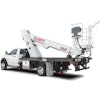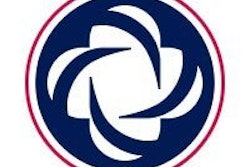
With today’s emphasis on building sustainability and the current focus on LEED certifications, the tools used to clean facilities are changing. Now, floor cleaning equipment feature performance capabilities that simultaneously reduce environmental impacts and improve worker productivity. To keep up with this growing trend, rental facilities are offering floor cleaning equipment designed to meet individual cleaning requirements and promote green cleaning initiatives.
Efficient rental machines allow operators to reduce water consumption, minimize or eliminate chemicals, avoid labor-intensive scrubbing and optimize energy usage - all while still delivering quality cleaning results. By selecting the appropriate auto scrubbers, carpet extractors, vacuums and sanders, facility managers can select rental equipment that will assist in enhancing building sustainability while maintaining cost-effective cleaning procedures.
LEED and green cleaning
Leadership in Energy and Environmental Design (LEED) is an internationally recognized mark of excellence that provides facility owners with guidelines for implementing measurable green building design, construction, operations and maintenance solutions. LEED certification offers independent, third-party verification that a building was designed and constructed using strategies aimed at achieving high performance in five key areas of human and environmental health: sustainable site development, water savings, energy efficiency, materials selection and indoor environmental quality.
LEED provides facility managers with guidelines for achieving and maintaining building sustainability. A major component to obtaining LEED recognition requires facilities to implement a comprehensive green cleaning plan that incorporates environmentally-preferred products, documented procedures and sustainable practices. Using LEED as a guide, rental facilities and cleaning professionals can select equipment that will compliment sustainability goals and strategies. Employing rental machines designed to reduce water consumption and chemical usage, while offering longer runtimes and minimal labor requirements help meet LEED standards by influencing overall sustainability and minimizing the environmental consequences associated with traditional cleaning procedures.
Rental equipment with green capabilities
Floor cleaning equipment is not a universal solution, as requirements vary not only by industry, but by facility as well, with each presenting specific cleaning challenges. Therefore, when selecting the appropriate cleaning equipment, such as auto scrubbers, carpet extractors, vacuums and sanders, cleaning professionals should ensure they provide both the necessary cleaning performance and promote a facility’s green cleaning initiatives.
Auto scrubbers
Auto scrubbers are used to accommodate daily cleaning needs, with some offering deep scrubbing capabilities for floor finish removal. Available in multiple sizes, auto scrubbers can accommodate a wide variety of buildings, from industrial plants and distribution centers to hospitals and universities. Traditional scrubbers utilize large quantities of water and chemicals, which can negatively impact the environment. Repeated exposure to caustic chemicals can also lower indoor air quality and affect the health and wellbeing of facility occupants.
Some auto scrubbers feature energy-efficient operation, for example, an auto scrubber designed with a unique rectangular scrubbing head and a spring-loaded safety design provide straight edge cleaning without additional time-consuming mopping. This technology ensures constant contact across the cleaning path, enabling single pass cleaning that is more consistent and uniform than disc scrubbing, reducing the need for labor-intensive double and triple scrub passes.
In addition to superior daily scrub capabilities, some autoscubbers also provide deep scrubbing operation that delivers simple floor finish removal capabilities - in a single pass - without costly chemicals, excess labor, slippery floors or undesirable odors. These types of auto scrubbers can allow operators to use up to 70 percent less water and solution, extend equipment pad life and increase battery runtime, all while reducing labor and cleaning costs. For additional green cleaning capabilities, reduced water usage and pad pressure permit auto scrubbers to utilize the motor and battery pack more efficiently, increasing run time and lessening any environmental consequences associated with battery recycling.
Additionally, auto scrubbers with versatile cleaning modes can mean renting fewer machines, reducing training and minimizing maintenance costs. The most flexible machines are capable of cleaning in multiple ways and allow staff to use the same piece of equipment for any floor-scrubbing job, resulting in reduced costs and higher cleaning productivity.
Carpet Extractors and Vacuums
When selecting extractors and vacuums, users should first identify whether the machine features the Carpet & Rug Institute’s (CRI) seal of approval. This comes with LEED endorsement and the Green Seal Standard for Commercial and Institutional Cleaning Services (GS-42). An extractor with the CRI Seal of Approval demonstrates that the extractor meets the highest standards in the industry for efficient and effective cleaning, as well as appearance retention. CRI’s scientific testing procedure provides the hard data needed for managers to appraise and compare carpet extractors.
When evaluating carpet extractors, rental facilities and cleaning professionals should select equipment that gets the maximum soil out of the carpet, without increasing environmental impacts. An example of a highly-efficient extractor is one that is capable of reaching and maintaining water temperatures as high as 212-degree Fahrenheit. Extractors with high-temperature cleaning capabilities can effectively remove stains with minimal soap, reducing chemical exposure and the added expense of cleaning solution. Hot water sanitizes the carpet while simultaneously improving cleaning quality—as much as 40 percent more effective than its cold water counterpart.
Available in diverse sizes and with multiple pressures, as well as providing heated and non-heated performance, carpet extractors provide operators with cleaning flexibility to satisfy applications ranging from light duty cleaning to deep extraction for large facilities.
With vacuums, CRI certification indicates the vacuum cleaner passed tests verifying its ability to remove soil, minimize dust and retain quality carpet appearance. Cleaning professionals often find that by selecting CRI green-certified vacuums they are able to see an improvement in cleaning productivity and air quality, as they minimize dust created through vacuuming and reduce the number of airborne contaminants. High-efficiency H.E.P.A. filters also aid in enhanced indoor air quality by effectively containing particles. Certified vacuums are also more successful at removing soil, dust and other compounds, which translates to greater vacuuming efficiency and less time spent cleaning—ensuring carpet integrity by reducing wear and tear and improving longevity.
Sanders (Dust Containment Vacuums)
During sanding jobs, dust becomes a potential health hazard as particles from sanding applications become airborne. Breathing in this debris may cause serious health consequences such as allergic respiratory symptoms, mucosal and non-allergic respiratory symptoms, and cancer. The extent of these hazards has not been clearly established, but should be avoided if possible.
To combat these health risks and maintain optimal air quality while using sanding equipment, implementing dust containment vacuums minimize hazardous sanding dust and debris. These vacuums conveniently attach to sanders, simultaneously promoting safety and productivity. Designed for high suction, with some up to 137 CMF and 99-inch waterlift, dust containment vacuums provide powerful performance while still ensuring low-noise operation for easy daytime cleaning or cleaning of noise-sensitive areas. Vacuums containing three-stage filtration features keep the motor clean to maintain longevity and performance quality. To meet strict federal regulations when sanding surfaces with lead-based finish, vacuums are available with H.E.P.A. filters to trap dangerous particles before being released into the environment.
In conclusion
Selecting rental equipment with green cleaning capabilities not only reduces environmental impacts, but also improves operator productivity and efficiency. Utilizing rental equipment that reduces water and chemical consumption, labor requirements and energy usage promote floor cleaning strategies that assist facility manager in attaining their sustainability goals.



















